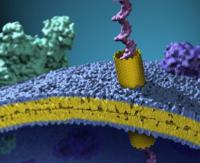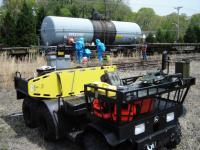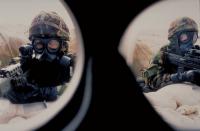-
Long-term health effects of atomic bombs dropped on Japan not as dire as perceived
The detonation of atomic bombs over the Japanese cities of Hiroshima and Nagasaki in August 1945 resulted in horrific casualties and devastation. The public perception of the long-term effects of radiation exposure, however, is, in fact, greatly exaggerated. New studies, summarizes over sixty years of medical research on the Hiroshima/Nagasaki survivors and their children, have clearly demonstrated that radiation exposure increases cancer risk, but also show that the average lifespan of survivors was reduced by only a few months compared to those not exposed to radiation. No health effects of any sort have so far been detected in children of the survivors.
-
-
Belarus’s lax approach to nuclear safety raises fear of another Chernobyl

Thirty years after Chernobyl, the world’s worst nuclear accident, a series of mishaps at a nuclear facility in Astravets, in Belarus, has raised concerns over nuclear safety, especially in neighboring Lithuania. Vilnius, the country’s capital, is located less than thirty-one miles from Astravets. Lithuania, accusing Belrus of Soviet era-like lack of transparency, says it would work with the international community to block the Astravets plant coming online.
-
-
Melting ice sheet could release frozen cold war-era radioactive waste
Camp Century, a U.S. military base built within the Greenland Ice Sheet in 1959, was decommissioned in 1967, and its infrastructure and waste were abandoned under the assumption they would be entombed forever by perpetual snowfall. But climate change has warmed the Arctic more than any other region on Earth, and as portion of the ice sheet covering Camp Century melt, the camp’s infrastructure will become exposed, and any remaining biological, chemical, and radioactive waste could re-enter the environment.
-
-
In dirty bomb prevention, Texas fails a crucial test
The clandestine group’s goal was clear: Obtain the building blocks of a radioactive “dirty bomb” — capable of poisoning a major city for a year or more — by openly purchasing the raw ingredients from authorized sellers inside the United States. It should have been hard. The purchase of lethal radioactive materials — even modestly dangerous ones — requires a license from the Nuclear Regulatory Commission, a measure meant to keep them away from terrorists. But a team of undercover bureaucrats with the investigative arm of Congress discovered that getting a license and then ordering enough materials to make a dirty bomb was strikingly simple.
-
-
“Liquid fingerprinting” technique identifies unknown liquids instantly
A new company — Validere — will commercialize sensing technology invented at Harvard University that can perform instant, in-field characterization of the chemical make-up and material properties of unknown liquids. Validere aims to develop the licensed technology, called Watermark Ink (W-INK), into a pocket-sized device that could be used by first responders to quickly identify chemical spills, or by officials to verify the fuel grade of gasoline right at the pump.
-
-
“Second skin” uniform protects soldiers from biological, chemical agents in the field

In work that aims to protect soldiers from biological and chemical threats, scientists have created a material that is highly breathable yet protective from biological agents. This material is the first key component of futuristic smart uniforms that also will respond to and protect from environmental chemical hazards.
-
-
Studying the basic science of nuclear waste
Approximately 300 million liters of highly radioactive wastes are stored in hundreds of underground tanks at the Hanford Site in Washington and the Savannah River Site in South Carolina. These wastes are extremely complicated mixtures of salts and sludges that have been exposed to ionizing radiation for decades. Their chemistry is dominated by interactions at solid-liquid interfaces that are poorly understood. A more thorough understanding of the chemistry of radioactive waste is key to treating this unwanted byproduct of winning the Second World War and the cold war.
-
-
Fukushima and the oceans: What do we know, five years on?
A major international review of the state of the oceans five years after the Fukushima disaster shows that radiation levels are decreasing rapidly except in the harbor area close to the nuclear plant itself where ongoing releases remain a concern. At the same time, the review’s lead author expresses concern at the lack of ongoing support to continue the radiation assessment, which he says is vital to understand how the risks are changing.
-
-
Using gels for biological decontamination

Removing chemical, biological, radiological, and toxic contaminants from a range of surface types could be as easy as peeling off a sticker thanks to research conducted by scientists at the U.S. Army’s Edgewood Chemical Biological Center (ECBC) and industry partner CBI Polymer.The researchers explored how a HydroGel can be modified to decontaminate surfaces contaminated with biological agents.
-
-
Block MEMS awarded $9.8M contract for standoff detection of chemical threats
Block MEMS, a developer of Quantum Cascade Laser (QCL)-based infrared detection systems, has been awarded a $9.8 million contract from the Intelligence Advanced Research Projects Activity (IARPA) to develop a system that can detect trace quantities of chemicals at standoff distances of at least 100 ft.
-
-
New method helps identify chemical warfare agents

Chemical warfare agents are powerful noxious chemicals that have been used as weapons of mass destruction. Finding trace amounts of a chemical warfare agent in a sample can be challenging, especially if the agent and the liquid it is in are both water-repellant, which is often the case. A new method for extracting, enriching, and identifying chemical warfare agents from oils and other organic liquids could help government officials and homeland security protect civilians more effectively from their deadly effects. The method uses nanoparticles to capture the chemicals.
-
-
Super-sniffer mice detect land mines, decode human olfactory system

Researchers have created super-sniffer mice that have an increased ability to detect a specific odor. The mice, which can be tuned to have different levels of sensitivity to any smell by using mouse or human odor receptors, could be used as land-mine detectors or as the basis for novel disease sensors.
-
-
Can next-generation bomb ‘sniffing’ technology outdo dogs on explosives detection?
With each terrorist attack on another airport, train station, or other public space, the urgency to find new ways to detect bombs before they’re detonated ratchets up. What researchers have wanted to develop for a long time is a new chemical detection technology that could “sniff” for explosives vapor, much like a canine does. Many efforts over the years fell short as not being sensitive enough. My research team has been working on this problem for nearly two decades – and we’re making good headway. Inspired by the tremendous detection capabilities of dogs, we’ve made remarkable advances toward developing technology that can follow in their footsteps. Deploying vapor analysis for explosives can both enhance security levels and provide a less intrusive screening environment. Continuing research aims to hone the technology and lower its costs so it can be deployed at an airport near you.
-
-
Iraq to stop using fake bomb detectors in wake of Baghdad attack
In the wake of the deadliest terrorist attack in Iraq since 2003, Iraq’s prime minister Haider al-Abadi has instructed all the country’s security forces – the federal and local police and the army — to stop using fake bomb detectors at the hundreds of security checkpoints across the country. A British businessman, James McCormick, purchased thousands of the novelty golf ball finders for $19.95 each, repackaged them, and then sold them to Iraq and other nations as advanced hand-held bomb detectors. McCormick charged $40,000 for each of the repackaged golf-ball finders.
-
-
Electronic nose detects pesticides, nerve gas
Detecting pesticides and nerve gas in very low concentrations? An international team of researchers has made it possible. The researchers have built a very sensitive electronic nose with metal-organic frameworks (MOFs). The chemical sensor can easily be integrated into existing electronic devices.
-
More headlines
The long view
Keeping the Lights on with Nuclear Waste: Radiochemistry Transforms Nuclear Waste into Strategic Materials
How UNLV radiochemistry is pioneering the future of energy in the Southwest by salvaging strategic materials from nuclear dumps –and making it safe.
Model Predicts Long-Term Effects of Nuclear Waste on Underground Disposal Systems
The simulations matched results from an underground lab experiment in Switzerland, suggesting modeling could be used to validate the safety of nuclear disposal sites.
